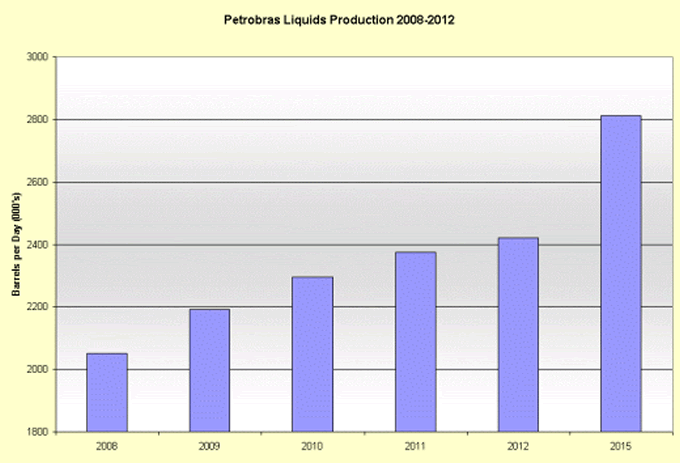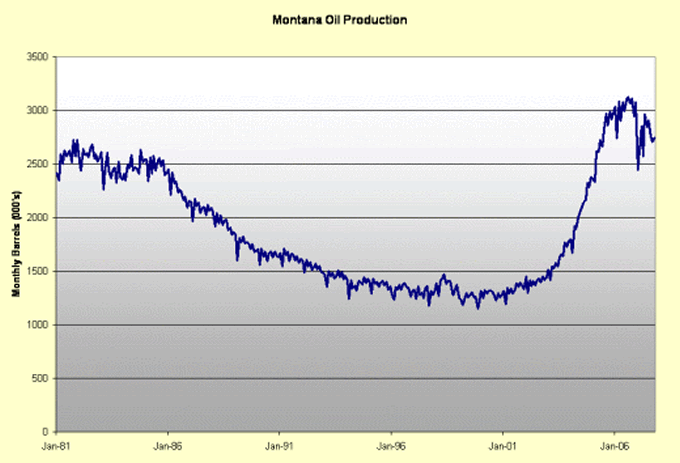Crude Oil Bull Market Uncovers Two New Investment Opportunities
Commodities / Oil Companies Mar 15, 2008 - 05:00 AM GMTBy: Elliot_H_Gue
 There are few countries or regions of the world that are seeing real growth in oil production. The simple fact is that the large onshore fields that have met the world's oil demand for decades are now mature and already seeing declining production.
There are few countries or regions of the world that are seeing real growth in oil production. The simple fact is that the large onshore fields that have met the world's oil demand for decades are now mature and already seeing declining production.
To offset declines from these easy-to-produce oil and gas fields, producers will increasingly target smaller, more-complex fields, as well as fields that are harder and more expensive to reach.
In other words, the world isn't necessarily running out of oil, but we're already seeing the end of easy oil. In addition, the era of cheap oil is over. To make the production of hard oil economically viable, prices will need to remain elevated.
But with oil production growth declining from many traditional producing regions, companies with the capacity to actually grow production are in the catbird's seat. Two areas of real production growth are deepwater and unconventional reservoirs. A perfect example of the former is Brazil's deepwater Tupi oilfield.
Tupi is located offshore of Rio de Janeiro; the field is roughly 800 kilometers long and 200 kilometers wide. That country's national oil company (NOC), Petrobras , believes that the field contains as much as 7 billion to 8 billion barrels of oil.
Energy Stocks Are Booming – Get on Board Now
Look at the numbers and decide for yourself: over the last year we're up 29% in our safe conservative portfolio, 61% in our core long-range investments and 90% in our aggressive portfolio!
And I'm convinced this energy boom will last for many years, handing you the chance for life-changing profits.
One of Petrobras' major partners in the Tupi project has been even more optimistic, projecting Tupi's total reserves at as high as 30 billion barrels of oil. But, in either case, Tupi is certainly the largest oilfield discovered anywhere in the world since the early 1990s.
The field could ultimately yield 1 million to 1.5 million barrels per day of oil production, a significant amount when you consider that Brazil currently produces just more than 2 million barrels of oil per day. Check out the chart below.

Source: Petrobras
This chart shows expected liquids production--mainly oil--for Petrobras out to 2012. Petrobras made these estimates last year before factoring in Tupi; the company could see growth beyond these levels once Tupi is included. However, it's clear that even without Tupi, Brazil's oil production was set to see strong growth in the coming years. Most of that growth is coming courtesy of deepwater developments; Brazil's onshore production is relatively limited.
Companies levered to promising developments like Tupi are among my favorite plays in the energy patch. Of course, although Tupi is a major find and the investment implications are significant, the field fits well with the end-of-easy-oil thesis I outlined above.
Specifically, Tupi is located in waters between roughly 6,500 and 10,000 feet in depth. That means that only the most advanced ultra-deepwater drilling rigs are capable of handling wells in this field. Petrobras has some rigs it contracted years ago at day-rates that would be considered low today. However, a company looking to contract an ultra-deepwater rig in a few years' time would likely pay north of $600,000 per day to lease that rig.
On top of that, the Tupi field is also geologically complex. The test wells that have been dug in this field are more than 20,000 feet long and are directional (non-vertical) wells. And producers had to drill through a mile-long layer of salt to access the reservoir. Salt layers are notoriously difficult to drill.
And the cost of leasing a rig and drilling a well is just one problem. Petrobras is building a series of floating offshore production platforms to process production from Tupi and other deepwater oilfields; these platforms can cost more than $1 billion and take considerable time to build.
Producing deepwater fields also requires subsea equipment and a network of subsea pipelines to move oil and gas produced from deepwater wells to floating platforms. Engineering and construction firms that install this entire offshore infrastructure are seeing multi-billion contract awards related to deepwater fields.As you can imagine, no producer would bother going after a field like Tupi if there were giant, cheap, easy-to-produce onshore oilfields that could still see growing production.
Domestic Oil
As I noted earlier, finding growing sources of oil production anywhere in the world is difficult. Rarer still are reservoirs showing significant growth located within the US and Canada.
One hot emerging play is the Bakken Shale play centered over North Dakota and eastern Montana. This play is really nothing new; it was extensively described by geologists in the early '50s. Producers have known that oil exists in this area for many years. The problem was accessing that oil efficiently.
The Bakken is an unconventional oil reservoir, much like the unconventional gas plays I described in the last issue of The Energy Letter . (See TEL , Feb. 29, 2008, Natural Gas: A Key Shift is Underway .) As I've explained before in this e-zine, oil and gas don't exist underground in massive caverns or lakes but are trapped in the pores, cracks and crevices of rock. Oil flows through this rock to wells powered by natural underground pressures. However, if those pores and fractures aren't well connected, the field lacks permeability, and there's no way for the oil to flow through the rock to a well.
Producing such fields requires the use of two key enabling technologies: horizontal drilling and fracturing. Horizontal drilling allows producers to expose their wells to more productive zones in a field. And fracturing involves pumping a liquid or gel into the reservoir under tremendous pressure; this actually creates artificial fractures and cracks through which oil can flow.
In the Bakken, producers were able to apply these newer technologies to produce a field once thought unproductive. Check out the chart below.

Source: Energy Information Administration
The chart shows that Montana's oil production looked to be tailing off sharply in the late '90s. But when producers began targeting a particularly productive field within the Bakken, production soared to new highs.
These are still relatively small production numbers in the context of the US' more than 20 million barrels of daily oil production. But the numbers don't look small for the handful of producers that have built large acreage positions in the Bakken and are drilling those plays. One of my favorites in The Energy Strategist has a 175,000-acre position in the region, accumulated quietly over the past few years.
That company is looking for oil production growth exceeding 30 percent per year for the next few years. And, so far, these fields have been exceeding estimates.
And this is only the beginning. A number of unconventional oil and gas plays in the US could prove to be huge winners for companies that are well placed with acreage positions.
By Elliott H. Gue
The Energy Letter
© 2008 Elliott H. Gue
Elliott H. Gue is editor of The Energy Letter , a bi-weekly e-letter as well as editor of The Energy Strategist , a premium bi-weekly newsletter on the energy markets. Mr. Gue is also associate editor for Personal Finance , where he contributes his knowledge of the energy markets.
Mr. Gue has a Master's of Finance degree from the University of London and a Bachelor of Science degree in Economics and Management from the University of London , graduating in the top 3 percent of his class. Mr. Gue was the first American student to ever complete a full degree at that university.
Elliott H. Gue Archive |
© 2005-2022 http://www.MarketOracle.co.uk - The Market Oracle is a FREE Daily Financial Markets Analysis & Forecasting online publication.



